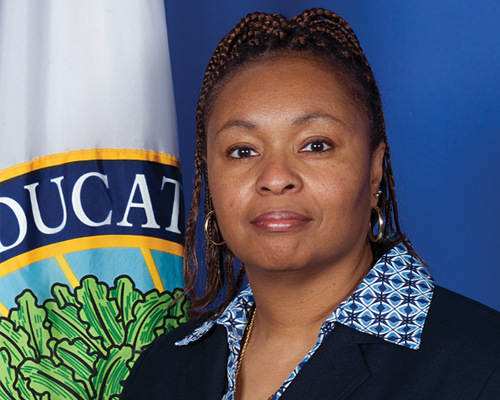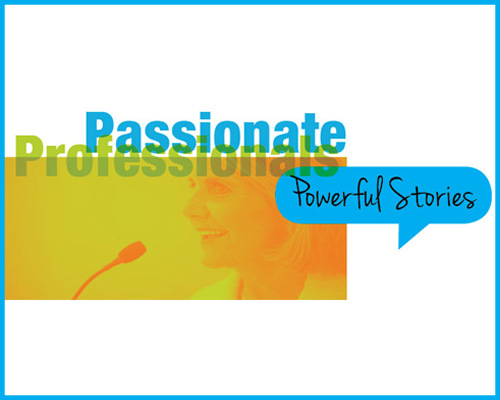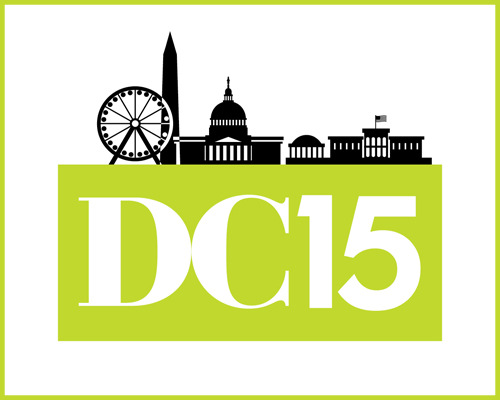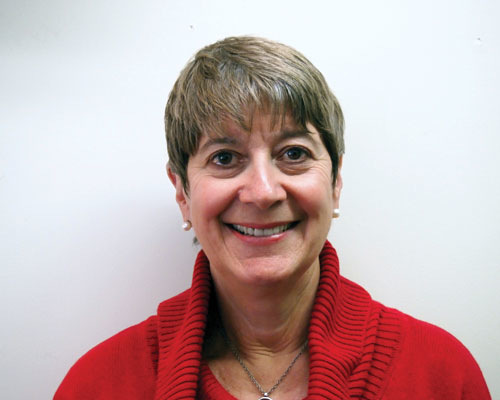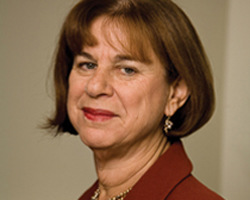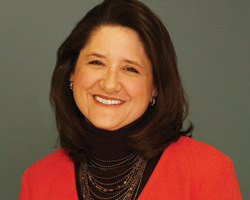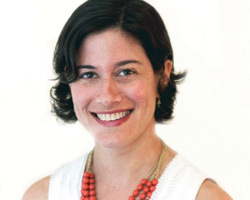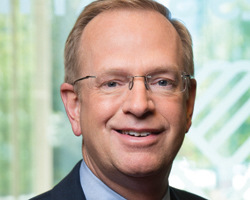Professional Development
NAA publishes fresh, new content every week covering a wide variety of topics related to the field of aftershool. In addition, NAA offers a variety of opportunities for virtual professional development (PD) through meaningful content, conversations and connections. Click here to see full descriptions of virtual PD offerings.
Children categories

STEM Gems (1)
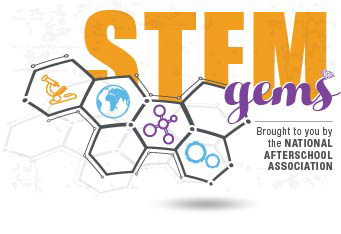
STEM Gems are short discovery-based experiences. They involve little or no materials and may be easily implemented by educators who are not STEM specialists. Each STEM Gem is designed to engage young people in active experiential learning. The activities begin by setting up connections to prior knowledge, then a hands on activity provides new concepts and the opportunity to design experiments to answer any questions the kids discover. Finally, a connection to a different scenario for the concept is provided to help cement and evaluate the learning.
STEM Gems are experiences designed to be used with kids of all ages. Younger children should be focused on one idea or concept and should perform the activity as a collective group with prompts and directions from the teacher. With older youth, the teacher should act as a facilitator. The older youth should be set up to work independently in small teams and encouraged to ask questions and try out their own experiments to answer them. Each team should report back on their findings, so a consensus around the concept is reached.
Each STEM Gem is presented in an easy to follow lesson plan:
Big Ideas and Science Talk
Central concepts and key words to give the adult the science background for the experience.
Engage
Open ended questions to stimulate discussion and generate connections to prior knowledge.
What You Will Need
A list of the materials.
Before You Begin
The preparation needed for the activity.
Explore and Experiment
The directions for the experience designed using open ended questions that focus the children on discovering answers.
Make the Connection and Extend and Evaluate
Connections to other scenarios that use the same concepts and related question(s) or additional activity to evaluate knowledge.
STEM Gems are available to members only. Login to access STEM Gems.
View items...
Sylvia Lyles, Ph.D.
Sylvia Lyles, Ph.D., has more than thirty-three years of experience in federal service, having begun her career in 1980 with the U.S. Department of Commerce. From 1984 through 2005, Dr. Lyles served as Education Services Specialist, Program Director, and Acting Director of Education for the U.S. Army's Continuing Education System, Installation Management Agency. In January 2005, she joined the U.S. Department of Education (ED), Office of Vocational and Adult Education, where she served as the Branch Chief for the Programs Administration Branch (discretionary and formula programs), and later became the Deputy Director of the Division of Academic and Technical Education. In June 2007, she joined the Academic Improvement and Teacher Quality Programs staff in the Office of Elementary and Secondary Education (OESE), where she was the Group Director for Academic Improvement Programs before taking on her current assignment as Director, Academic Improvement and Teacher Quality (AITQ).
As Director, AITQ, Lyles provides leadership for more than twenty discretionary and formula programs, overseeing a $5 billion educational investment. She advises the Secretary, OESE Assistant Secretary, and other leadership on education matters, issues, and initiatives that impact students at the pre-K through high school levels. She briefs the Secretary's policy committee and senior staff on national educational issues and concerns where she recommends corrective actions or strategies for program development and improvement. Lyles' responsibilities include, but are not limited to, solving office operational problems, ensuring compliance with organizational policies, reaching compromises, and mediating conflicts between opposing values and perspectives from a national perspective.
Lyles holds a B.A. in education/secondary education from Old Dominion University, an M.A. in education/counseling from Boston University, and a Ph.D. in education/training and organizational performance from Capella University.
What are the accomplishments you are most proud of?
Working at the U.S. Department of Education moves you out of direct contact with administrators, teachers, principals, students, and families. However, I am really proud to be a part of a team that is comprised of brilliant and caring people who want to make a difference. Every time I walk through the door, I may not have direct contact with students—and we may not get it right the first time, all the time—but I feel good that on any given Monday, a student and his or her family will benefit in some small way from the work that I am involved in at the Department.
Where do you see the field in ten years?
I believe that in the next three years and beyond, we will see afterschool continue where it should be—as part of the sphere that moves education. With the implementation of NCLB Act of 2001, we saw the federal afterschool program move from a social and emotional focus to include an academic achievement focus. Because the current administration believes in educating the whole student, family, and community, the afterschool focus is making a full pivot towards cognitive and non-cognitive abilities; this is a good thing for our field, as this places us in the middle of where education occurs.
What are the biggest opportunities for the afterschool industry?
We have to take advantage of our expertise to build alliances across communities and industries. We know that it takes the entire community to support students and teachers. For years, afterschool programs have had to build these alliances in order to implement successful programs. There are many education programs that can learn from us.
To learn and train on the design and implementation of innovative and creative programs, go to an afterschool program. It has been our job to continue student learning in the afterschool space by taking the content learned during the school day and molding it into activities that are innovative and will keep students engaged. We do this well.
What are the biggest challenges facing afterschool?
As we face funding challenges at the federal, state, local, and community levels, we have to find ways to leverage existing funds through partnerships and community involvement to build high-quality programs.
What makes an afterschool program successful?
There are many indicators of success for afterschool programs. For me, an afterschool program is successful when we can create opportunities and activities that will help to keep a child in school and help students to graduate—and graduate on time. Research suggests that students that are in afterschool programs at least three days a week, for two hours each session, tend to have higher student achievement results—this is great. However, I also feel that Drew, who was a student with little confidence, shy and unsure of himself when he started the afterschool program at a very early age and continued in the program in elementary through high school, is now an outgoing, confident, freshman in college. This defines success for me.
Edited by Amy L Charles, editorial director of AfterSchool Today magazine, the Official Publication of the National AfterSchool Association.
Jodi Grant
Since 2005, Jodi Grant has been executive director of the Afterschool Alliance, a nonprofit public awareness and advocacy organization working to ensure that all children and youth have access to quality, affordable afterschool programs.
2015 NAA Convention in Washington, D.C.
Join more than two thousand afterschool professionals for the largest professional development and networking event in the field!
Convention Proposal Webinar
The call for proposals for the 2015 NAA Convention is open until October 17, 2014.
Ellen S. Gannett, M.ED.
Ellen S. Gannett is director of the National Institute on Out-of-School Time (NIOST) at the Wellesley Centers for Women at Wellesley College. A national action/research project, NIOST has provided research, evaluation, technical assistance, consultation, and specialized training on afterschool programs throughout the United States for more than thirty-five years.
Lucy N. Friedman, Ph.D.
Founding President, TASC
Dr. Lucy N. Friedman is the founding president of TASC, which is dedicated to expanding the school day to give disadvantaged kids more opportunities to discover and develop their talents; more support to overcome the challenges of poverty; and more time to achieve at the high levels essential for success in the global workplace. Before joining TASC, Friedman was the founding executive director of Safe Horizon (formerly known as Victim Services), a crime victim assistance and advocacy organization. She serves on several boards, including the Afterschool Alliance, Leadership Enterprise for a Diverse America (LEDA), and the Human Services Council. She is co-chair of the New York State Afterschool Network (NYSAN) and a member of the executive committee of the Coalition for Science After School. Friedman received a B.A. from Bryn Mawr College and a Ph.D. in social psychology from Columbia University.
Terri Ferinde Dunham
Partner, Collaborative Communications Group
Lead, National Network of Statewide Afterschool Networks
Terri Ferinde Dunham is working to create new learning systems where schools and communities work together to expand learning opportunities for young people. She’s most often found behind the afterschool field scenes, bringing people together, writing about what works, and managing the resources and supports needed to build systems.
For more than a decade, Terri has managed the National Network of Statewide Afterschool Networks funded by the C.S. Mott Foundation, with forty-seven statewide networks and partnerships focused on policy and funding for quality afterschool programs across the country.
Terri is publisher of and an author in the groundbreaking compendium Expanding Minds and Opportunities, Leveraging the Power of Afterschool and Summer Learning Programs for Student Success (2013). She serves as director of the Expanded Learning and Afterschool Project, a fifty-state initiative harnessing the power of networks and leaders to help schools and communities leverage the time beyond school to accelerate student achievement by sharing research on high-quality expanded learning; identifying and spreading best practices in afterschool and summer learning; and sharing affordable, sustainable, and effective expanded learning approaches.
With broad and deep knowledge of issues affecting afterschool, Terri has led and supported projects for influential afterschool organizations including the National AfterSchool Association, Afterschool Alliance, Wallace Foundation, Coalition for Science After School, United Way WorldWide, National 4-H Council, Georgia Afterschool Alliance, Arizona Center for After School Excellence, and other local initiatives. She led the development of many afterschool-related products from the National Association of Elementary School Principals, including Leading After-School Learning Communities: What Principals Should Know and Be Able To Do.
Terri works with organizations focused on in- and out-of-school learning to develop networks, strategize new initiatives, and build capacity. As a partner at Collaborative Communications Group, she has managed, facilitated, and supported groups that expand learning opportunities and redefine professional development for clients such as the National Academy Foundation, Council of Chief State School Officers, and the Alliance for Excellent Education. Collaborative has produced dozens of award-winning publications and online tools for educators.
Prior to her Collaborative role, Terri served for ten years at the U.S. Department of Education, where she produced a live, interactive television program featuring school and community leaders. For this work, she was recognized as a Fellow with the Council for Excellence in Government. She holds a master's degree in public administration and a bachelor's degree in communications and government from the American University.
In her community, Terri serves as chair of the board of the Greenbrier Learning Center, an afterschool and summer learning program serving students in Arlington, Virginia. She is a former PTA president and school-board appointed chair of an out-of-school time advisory committee.
What are the accomplishments you are most proud of?
From an initial meeting on Kiawah Island, South Carolina, with nine states to the force field it is today, I am incredibly proud of the development of the national network statewide afterschool networks. The true accomplishments are not mine, but the forty-two dedicated, tireless, creative state leads who guide their networks to shape policy and secure funding for afterschool programs. My work is convening these people, connecting the dots, and coordinating technical assistance.
In Expanding Minds and Opportunities, my co-authors and I find this sometimes invisible but veritable force field of organizations, policies, funding, networks, and research creates opportunities and removes barriers to expanded learning opportunities for millions of young people in rural and suburban communities, as well as small towns and large urban areas nationwide. I am proud of my work in supporting these organizations and providing them the tools and systems they need to accomplish their work to serve children and families.
I have convened literally thousands of people in national, state, and local gatherings to develop collective vision, knowledge, and tools for afterschool and summer learning programs. From a communitywide strategic plan for afterschool in Greenville, South Carolina, to the 2014 National AfterSchool Association Convention with 2,100 afterschool professionals, I bring resources and expertise together to build the field. A notable example was the 2003 After School Summit with U.S. Secretary of Education Rod Paige and then-actor Arnold Schwarzenegger, which we convened in three weeks and was credited with turning the tide for federal afterschool funding at the time.
Where do you see the field in ten years?
More than seven years since the publication of A New Day for Learning, released by a task force I coordinated on behalf of the C.S. Mott Foundation, I believe we are still striving for that “comprehensive, seamless approach to learning that values the distinct experiences that families, schools, afterschool programs, and communities provide for children.”
In the next ten years, I see the field as strong as ever, drawing on its youth development foundation to expand a range of learning opportunities for young people. I can imagine the field even more central in competency-based learning systems, where afterschool professionals can help young people find their passions, build portfolios, and earn credit based on the learning experiences that happen beyond the school day and walls. I know that afterschool programs and systems will be issuing digital badges to recognize the learning and skills gained in programs. And I dream that afterschool and summer learning will be the norm in every school and community with established partners and funding streams.
What are the biggest opportunities for the afterschool industry?
Afterschool programs offer the time, space, and place for innovation. Our opportunity as a field is to embrace this notion and find the tools, resources, and approaches that engage young people and build skills in a range of social, emotional, physical, and academic domains. From the Maker Movement to blended learning to service learning and arts education, afterschool and summer learning programs provide choice and opportunity for young people to find their passions. As a field, we can seek and embrace these new trends in learning and test them in a safe space with afterschool professionals who are guides on the path for lifelong learning. The field has an amazing opportunity with the rollout of technology in many districts, like iPads, Chrome Books and more. The opportunity is to 1) gain access to the technology and Internet connections and 2) support young people in using these powerful tools. Imagine young people working with afterschool staff to use the Khan Academy for homework help or visit other planets through NASA. And beyond the academic learning, afterschool programs have an opportunity to shape the culture in the community, helping teach parents and families about the technology and how learning is changing.
What are the biggest challenges facing afterschool?
It always comes down to funding. I work nationally in the fight to protect the federal 21st Century Community Learning Center funding stream and I work locally in an afterschool program to raise funds to expand our program for the neediest young people in Arlington. Every penny is precious, and I am always in awe of how far a program can stretch a dollar. That’s why our work to show the evidence, demonstrate innovation, and develop partnerships is so essential. Securing established funding streams through school districts or state legislature is hard, challenging work, but ultimately will provide the security for afterschool and summer programs to thrive.
What makes an after school program successful?
Afterschool programs succeed because of the staff and the culture. Successful programs are places where young people feel safe, valued, and happy. Afterschool professionals are the lynchpin in knowing how to best engage young people and supporting them in their learning and their lives. They are the true influential people in afterschool, shaping millions of young lives every day, after school.
Edited by Amy L Charles, editorial director of AfterSchool Today magazine, the Official Publication of the National AfterSchool Association.
Jessica Donner
Director, Every Hour Counts
Jessica Donner is director of Every Hour Counts (formerly the Collaborative for Building-After School Systems), a coalition of national citywide organizations that increase access to quality learning opportunities, particularly for underserved students. The organization is a leading voice promoting expanded-learning systems, which provide learning and enrichment through afterschool, summer, and other initiatives.
Donner manages the organization's efforts to develop policy recommendations and solutions, test the feasibility of policy and practice recommendations and disseminate findings, and deliver technical assistance to communities to build expanded learning systems. Prior to joining Every Hour Counts, she directed statewide and national service-learning initiatives at the National Service-Learning Partnership at the Academy for Educational Development and the Massachusetts Department of Education. She holds a master's degree in urban policy and management from The New School, and a bachelor's degree in English from the University of Pennsylvania.
What are the accomplishments you are most proud of?
I'm most proud of Every Hour Counts' federal policy, technical assistance, and research achievements. Because we represent leading on-the-ground afterschool practitioners, our federal policy recommendations are informed by promising practices. Our policy wins build off the best of afterschool around the country—such as the value of meaningful school and community partnerships.
Every Hour Counts has been working over the past few years to develop a shared set of outcomes at the system, program, and youth levels, and has developed a Measurement Framework. This work builds off of our intermediary partners' systemic data collection efforts and the latest research. The Framework underscores the importance of system building and has the potential to support the development of high-quality afterschool programs across the country.
Through our technical assistance and communications activities, communities around the country have improved the quality of afterschool programs at scale, based on promising practices from our intermediary partners.
Where do you see the field in ten years?
We're seeing increased energy around connections with formal education in a very positive way, with collaborative teaching and joint planning between formal educators and community educators. This work is being modeled by Every Hour Counts intermediaries such as TASC, Providence After School Alliance, and Boston After School and Beyond, and has the potential to influence the next decade of afterschool practice. I also see many more coordinated citywide efforts to bring high-quality afterschool to scale, led by intermediary organizations.
What are the biggest opportunities for the afterschool industry?
Efforts to lengthen the school day and year can be a strategic opportunity for afterschool providers to ensure that students have access to more engaging learning opportunities that support their development. Increased recognition by educators of the importance of social and emotional outcomes can be an opportunity for the afterschool field, as afterschool is often seen as a critical partner in influencing these skills.
What are the biggest challenges facing afterschool?
Inadequate financial resources for programing. Also, often system-building supports such as technical assistance, data systems, and coordinating intermediaries lack support and financial resources, yet are critical to ensuring high-quality programs and positive youth outcomes.
What makes an after school program successful?
Clearly, having front-line staff and site directors that love working with young people and have content-rich and youth development skills make or break a program. Myriad age-appropriate activities, youth leadership opportunities, and a positive partnership between a principal and after-school program are other markers of a successful afterschool program.
Edited by Amy L Charles, editorial director of AfterSchool Today magazine, the Official Publication of the National AfterSchool Association.
Jim Clark
President and CEO, Boys & Girls Clubs of America
Jim Clark joined Boys & Girls Clubs of America as president and CEO in 2012, leading a network of more than four thousand Boys & Girls Clubs serving four million young people annually—in every state, in large cities and small towns, in public housing, on Native lands, on U.S. military installations worldwide. He’s guided BGCA through the Great Futures Impact Plan, an exciting new strategic direction. Under his leadership, Clubs are increasing their impact on young people by focusing on Academic Success, Good Character and Citizenship, and Healthy Lifestyles as priority outcome areas.
To ensure the best possible service to its Clubs, Clark spearheaded a major restructuring. He’s introduced innovative programming that supports the outcome areas in fun, engaging ways, including state-of-the-art STEM initiatives and Brain Gain, a program to combat summer learning loss. BGCA is emphasizing services to Clubs in child protection and safety, executive and board development, increasing Club attendance, boosting high school graduation rates, and fighting childhood obesity.
Prior to joining BGCA, Clark spent eight years as president and CEO of the Boys & Girls Clubs of Greater Milwaukee, one of the nation’s strongest Club organizations. He lives in Atlanta, home of BGCA’s national headquarters, with his wife, Samantha, and their two sons.
What are the accomplishments you are most proud of?
Meeting the young people whose lives are transformed by their experience belonging to the Boys & Girls Club is truly a privilege of working in this field. These kids succeed because of the guidance and mentorship they receive from dedicated Club professionals, who care deeply, help them believe in themselves, and encourage them to work hard and never give up, despite the obstacles. The scores of dedicated youth development professionals I meet in our Clubs are an inspiration and a source of great pride.
Where do you see the field in ten years?
I foresee a much higher level of recognition of the critical importance of out-of-school time as a national priority—and more partnerships between organizations like BGCA and the higher education community, because of the impact we have on helping kids advance academically. We’re seeing more and more research that provides quantitative evidence of the results quality out-of-school programs can achieve, especially in underserved communities. Our vision at BGCA is to work toward the day that no child lacks a high-quality, professionally supervised and structured experience every day, after school and during the summer. To achieve that, we need many more dedicated, qualified professionals to enter the youth development field.
What are the biggest opportunities for the afterschool industry?
Two of the biggest areas of opportunity are summer learning loss prevention and STEM education. To put young people on the path to graduation from high school, with a plan for the future, both of these areas are critical. At Boys & Girls Clubs of America we are investing significantly in both, to help create a pipeline for young people who aspire to attend college and succeed in the twenty-first-century economy. And we are adding an “A” to STEM to create STEAM—Science, Technology, Engineering, Arts, and Math. We must stimulate creative, innovative thinking as one of the cognitive skills that will enable our kids to advance and our nation to thrive amidst increasing global competition. However, at the most basic level, we must continue to drive improvements in school attendance, which is a key factor in addressing the dropout crisis. We know too many kids start to fall behind as early as second and third grade, and never recover. We can play a major role in helping kids stay on track toward timely academic advancement and ultimate success.
What are the biggest challenges facing afterschool?
Everyone in the afterschool and youth development field must realize that, as a famous ad campaign once stated, we must “try harder” to position our work as essential. The nonschool hours represent an investment opportunity in America’s future that is every bit as important as strengthening our schools, teachers, and curricula. We still have much ground to cover in order to make that case. As a leader with more than a century of success, BGCA will play its part, as aggressively as we can, to speak for the afterschool field and advocate for its growth and support.
What makes an afterschool program successful?
The short answer is dedicated, caring adults, a safe place, and fun! At Boys & Girls Clubs, we use a Formula for Impact that more formally identifies five key elements for positive youth development: a safe, positive environment; fun; supportive relationships; opportunities and expectations; and recognition. When these are in place, we see positive, measurable outcomes in our three priority areas: academic success, good character and citizenship, and healthy lifestyles. Our tagline states that “Great Futures Start Here” at the Boys & Girls Club. When fifty-seven percent of our alumni reported in a Harris Survey that the Club saved their life, it reaffirmed that the formula really does work. Our challenge and our quest are to enable more youth who most need a Club to have this same opportunity.
Edited by Amy L Charles, editorial director of AfterSchool Today magazine, the Official Publication of the National AfterSchool Association.
National AfterSchool Association • 2961A Hunter Mill Road, #626 • Oakton, VA 22124 • info@naaweb.org

